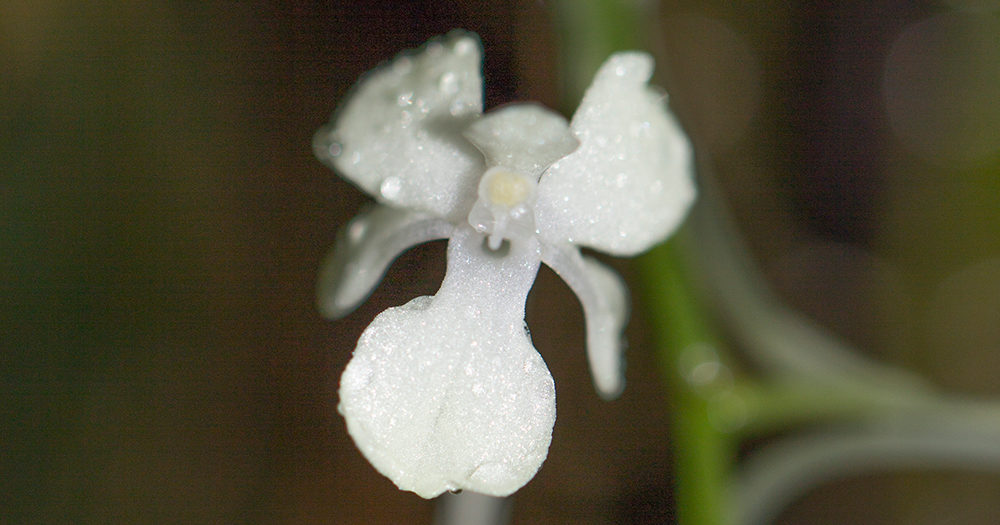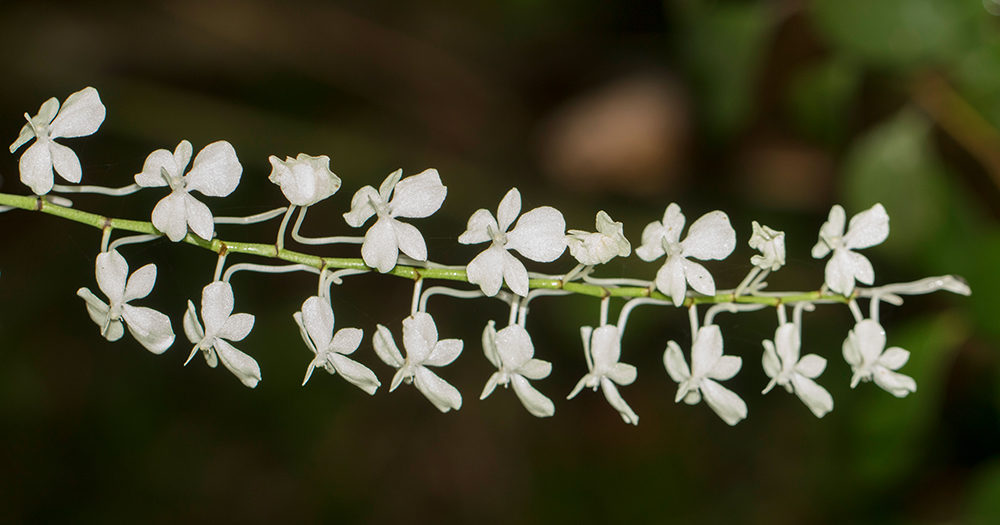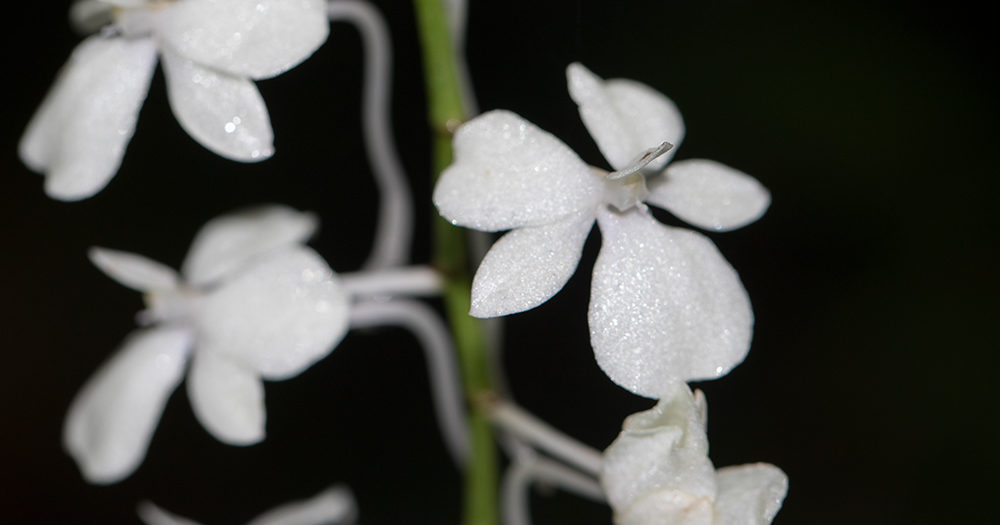Aerangis citrata, also called Manta in Malagasy, is found on the entire eastern side of Madagascar. Wherever there is high humidity and permanently warm regions, it feels at home. From the coast up to 1500 m above sea level you can find this orchid. Like many orchids of Madagascar, Aerangis citrata lives epiphytically, i.e. it grows on branches of trees. And it won’t get very big. With leaves only about ten centimetres long, it is more of a miniature plant.
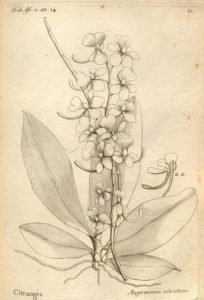
The name Aerangis derives from the Greek Aer and angos, which together means”aerial root”. The appendage citrata comes from Latin and means “lemon yellow” – although the flowers of this orchid are flawless white, maximum cream-coloured. However, the colour designation refers to the so-called anther cap (the cap of the pollen bag in which pollen is produced), because this is actually bright yellow, especially with freshly flowering flowers. Another theory says that the flowers should give off a light lemon scent – but hardly anyone has really smelled this scent yet.
The flowering season of Aergangis citrata extends over the entire rainy season and even begins shortly before, depending on the region. From about August to May you can see the white flowers with the yellow anther caps, which are just under three centimetres in size. The flowers closest to the plant open first, the most distant last.
In a club-shaped, almost three centimetre long spur, the orchid produces its nectar, which attracts little moths at night. These fertilise other Aerangis citrata by unnoticedly transporting the pollinarium from one plant to the scar of another. The pollinarium consists of so-called pollinia, which are individual pollen stuck together into balls. Once the pollination has worked, the petals soon dry up and fall to the forest floor. The pollen migrates to the ovary, where the orchid is fertilized within a few weeks.
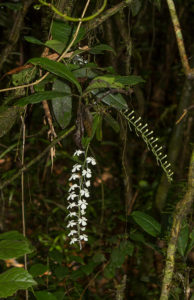
The fruits, which then form within five to six months, are so-called capsule fruits. Of course you can’t eat them, they are only intended for the distribution of orchid seeds. Each capsule contains thousands of tiny seeds. When they are ripe for sowing, the capsule dries and releases the seeds into the environment. With the wind they are scattered far around. Only few seeds germinate.
Outside Madagascar Aerangis citrata is a very popular species among orchid lovers. It can be kept relatively simple in greenhouses, remains small, likes half-shady places, flowers up to three times a year and bears 15 to 20 flowers on each inflorescence. This makes them attractive not only in the rainforest of Madagascar, but also pleases hobby botanists all over the world. A more beautiful experience is to discover the orchid in its natural habitat on Madagascar. It grows particularly often in Ranomafana National Park – you still have to look closely here, but skillful guides can show the orchid reliably.
 MADAMAGAZINE Your Magazine about Madagascar
MADAMAGAZINE Your Magazine about Madagascar


